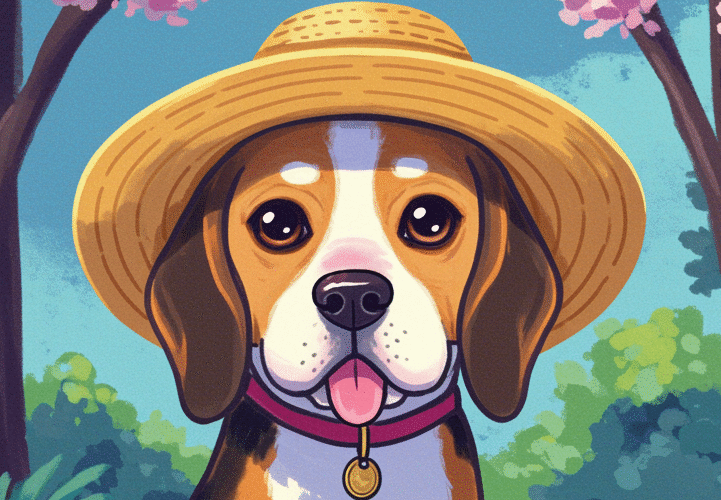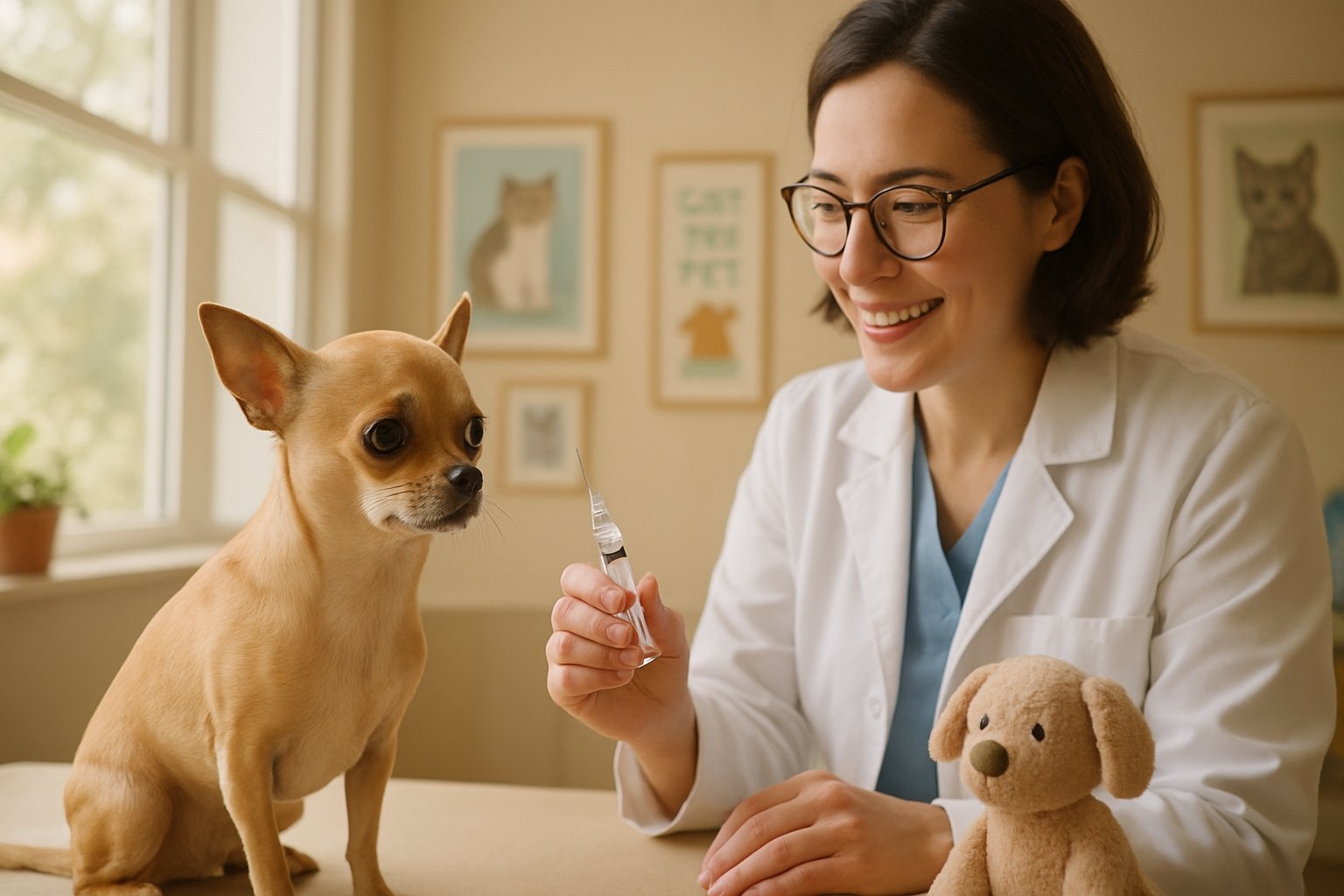Understanding Parvo in Puppies
What is Parvo?
Canine parvovirus is a highly contagious virus that primarily affects the gastrointestinal tract of dogs. This formidable virus spreads through direct contact with infected dogs or indirectly through fecal-contaminated environments. Its tenacity in the environment makes it particularly hazardous, as it can survive for long periods and is resistant to many cleaning products.
Symptoms of Parvo in Puppies
Symptoms of parvo can strike quickly and savagely. The most common signs include severe vomiting, bloody diarrhea, lethargy, and loss of appetite. If your puppy shows any of these symptoms, immediate veterinary attention is crucial, as the virus can be life-threatening without prompt care.
Why Puppies Are Vulnerable
Puppies are particularly susceptible to parvo due to underdeveloped immune systems and incomplete vaccination coverage. Without the full set of vaccines, puppies lack the necessary defenses, making them easy targets for the virus. Additionally, their curiosity often leads them to sniff or consume contaminated objects or substances, increasing their risk further.
Vaccination: The First Line of Defense
Recommended Vaccination Schedule for Puppies
A rigorous vaccination schedule is your puppy’s best shield against parvo. Puppies should receive their first parvo vaccine at six to eight weeks old, followed by boosters every three to four weeks until they are four months old. According to Dr. John Doe, a renowned veterinarian at the American Veterinary Medical Association (AVMA), “Consistent and timely vaccinations are vital to effectively protect puppies from parvo.”
How Vaccines Work
Vaccines introduce a harmless form of the virus into the puppy’s system, prompting their immune system to build a defense mechanism. Once vaccinated, puppies develop antibodies that recognize and fight off parvovirus if exposed in the future. This immunization process is a critical component of preventing parvo outbreaks.
Possible Side Effects and What to Expect
While vaccines are generally safe, some puppies may experience mild side effects, such as soreness at the injection site, slight fever, or reduced activity levels. These symptoms typically subside within a day or two. Serious reactions are rare but warrant immediate veterinary attention.
Hygiene and Environmental Control
Importance of Clean Living Spaces
Maintaining a clean environment is essential for preventing parvo. Puppies are at higher risk when they inhabit spaces contaminated by the virus. Regularly clean and disinfect your puppy’s living area using effective cleaning agents.
Tips for Disinfecting Home and Yard
Effective cleaning agents, such as bleach, can neutralize parvovirus on surfaces. Ensure thorough disinfection of areas your puppy frequents, including crates, toys, bowls, and outdoor spaces. Diluted bleach solution (1:32 ratio) is recommended for its efficacy in killing the virus on non-porous surfaces.
Preventing Exposure in Public Spaces
While socialization is crucial for development, it’s important to practice caution in public spaces until your puppy completes the vaccination series. Avoid parks and areas frequented by unvaccinated dogs. When venturing outside, keep your puppy on a lead to prevent contact with unknown dogs and potentially contaminated areas.
Diet and Nutrition for a Strong Immune System
Recommended Nutritional Guidelines
A balanced diet is foundational for bolstering your puppy’s immune system. Provide a diet rich in high-quality proteins, essential fatty acids, and vitamins to support robust health. Fresh water should always be available to keep them hydrated and support overall well-being.
Supplements and Probiotics
Supplements and probiotics can enhance your puppy’s immune defenses. Omega-3 fatty acids help reduce inflammation, while probiotics support gut health, which is central to a strong immune response. Always consult your veterinarian before introducing supplements to ensure they are appropriate for your puppy’s needs.
Socialization and Safe Interactions
Balancing Socialization with Safety
Introduce your puppy to new environments and dogs safely by organizing playdates with vaccinated dogs and family members’ pets. Ensure these interactions occur in controlled spaces, reducing exposure to potentially contaminated areas, and fostering positive, safe social experiences.
Recognizing Risks in Dog Parks and Public Areas
Dog parks present various risks for your unvaccinated puppy. Until your puppy is fully vaccinated, avoid high-risk areas like dog parks where the likelihood of exposure to parvo is heightened. Socialize carefully in controlled, private environments to protect both their physical and emotional health.
Regular Veterinary Check-ups
Importance of Routine Health Assessments
Routine vet visits are vital in monitoring your puppy’s health. During these check-ups, your veterinarian will assess their growth and administer necessary vaccinations, ensuring they stay on track with their health plan. Frequent visits also help detect any early signs of illness, enabling prompt intervention.
Early Diagnosis and Intervention
Early detection is crucial in managing parvo effectively. Observant owners and regular veterinary care can identify symptoms early, increasing the chances of a positive outcome. Quick action and professional care are instrumental in offsetting the virus’s impact.
Emergency Response: What to Do if Your Puppy Shows Symptoms
Recognizing Symptoms Early
Being able to spot parvo symptoms swiftly is crucial. A quick checklist includes vomiting, diarrhea, lethargy, and sudden loss of appetite. If any of these symptoms appear, take immediate action to protect your puppy.
Immediate Actions to Take
Upon noticing parvo symptoms, isolate your puppy to prevent spreading the virus to other pets. Contact your veterinarian without delay for guidance. They may suggest supportive care and fluid therapy to stabilize your puppy before a formal examination.
Seeking Veterinary Assistance
Prompt veterinary intervention is paramount when dealing with parvo. Immediate professional assistance often determines the outcome, as supportive treatments, such as intravenous fluids and antiviral medication, can significantly improve survival rates.
Conclusion
Protecting your puppy from parvo demands vigilance and proactive measures. By adhering to vaccination schedules, maintaining clean environments, and balancing socialization with caution, you establish a strong defense against this virus. Regular vet check-ups and a nutritious diet further equip your puppy to fend off potential health threats. 🐾
FAQs about Parvo Prevention
1. How soon can a puppy be vaccinated for parvo?
Puppies can start receiving parvo vaccines as early as six weeks old, with additional doses every three to four weeks until they complete the series at 16 weeks.
2. What disinfectant is effective against parvo?
A solution of bleach and water is highly effective against parvo. Ensure a dilution ratio of 1:32 for non-porous surfaces to kill the virus.
3. How long should I avoid public areas with my puppy?
Avoid public areas until your puppy has completed their full vaccination series, usually by 16 weeks. This reduces the risk of exposure to parvovirus.
4. Can adult dogs get parvo?
While less common, adult dogs can still contract parvo, especially if they are unvaccinated or have compromised immune systems.# FAQs about Parvo Prevention in Puppies
What should I do if I suspect my puppy has been exposed to parvo?
If you suspect your puppy has been exposed to parvo, act promptly to minimize risks. Immediately consult your veterinarian for advice on monitoring symptoms and possible preemptive measures. They may recommend enhanced observation for symptoms or additional vaccination if exposure occurred at a time when immunity might be waning. Isolate your puppy from other dogs to prevent potential transmission while you seek professional guidance.
Is there a specific diet I should follow to support my puppy recovering from parvo?
For puppies recovering from parvo, a well-balanced, easily digestible diet that supports gut health is essential. Your veterinarian may suggest a diet that is high in quality protein and easily digestible carbohydrates to aid in gastrointestinal healing. Additionally, they might recommend adding probiotic supplements to help restore normal gut flora and enhance the immune system. Proper hydration plays a crucial role, so ensure constant access to clean, fresh water.
Are there long-term effects on puppies that survive parvo?
Puppies that survive parvo can experience long-term effects, primarily linked to the severity of the initial infection. Some puppies may have ongoing gastrointestinal issues, such as a sensitive stomach or intermittent diarrhea, resulting from the virus’s damage. Growth and development might be affected, especially in severe cases, making consistent veterinary monitoring important for sustained recovery. With proper care, most puppies will fully recover and live normal, healthy lives.
Can other pets in the household be at risk of parvo if my puppy is infected?
Yes, other dogs in your household can be at risk of parvo if your puppy is infected, particularly if they are unvaccinated or have a compromised immune system. Immediate isolation of the affected puppy is crucial to prevent the spread of the virus. Ensure all dogs in the household are up-to-date on vaccinations and maintain strict hygiene practices, including thorough cleaning and disinfecting of shared areas and items. Consult your veterinarian about any additional precautions necessary for your specific situation.
How can breeders prevent parvo outbreaks in their kennels?
Breeders can prevent parvo outbreaks by implementing strict health protocols, including ensuring all puppies receive timely vaccinations and booster shots before being introduced to potential new environments. Maintain rigorous hygiene practices, such as sanitizing shared spaces with effective disinfectants like diluted bleach. Limiting access to visitors and thoroughly vetting new arrivals can also minimize exposure risks. Continuously monitor the health of all dogs in the kennel to quickly identify and isolate any potential cases of illness, reducing the chance of an outbreak.








